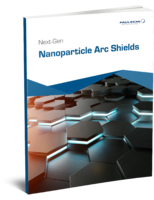FlexRay and CAN Interfaces come in PCI and PXI formats.
Press Release Summary:
Along with universal API, NI-XNET hardware platform includes 2 FlexRay interfaces and 12 CAN interfaces designed to help engineers accelerate prototyping, simulation, and testing of next-generation devices and networks. Included software provides signal database editor as well as bus monitor utility. Available in 1- or 2-port versions, interfaces help engineers accelerate simulations by providing onboard processor dedicated to each port to offload intensive tasks.
Original Press Release:
National Instruments Introduces High-Performance FlexRay and CAN Interfaces
NI-XNET Software and Hardware Deliver a Common Programming Interface for Hardware-in-the-Loop and End-of-Line Test Applications
AUSTIN, Texas, Aug. 24, 2009 -- National Instruments (NASDAQ:NATI) today announced NI-XNET CAN and FlexRay embedded network interfaces, which help engineers working in industries such as automotive and aerospace quickly prototype, simulate and test next-generation FlexRay and controller area network (CAN) devices and networks. The NI-XNET embedded networks platform consists of 14 new high-performance PCI- and PXI-based interfaces for FlexRay and CAN and a new, universal API for rapid application development. The platform is designed for demanding applications, such as hardware-in-the-loop (HIL) and end-of-line test, which require hundreds of signals and submillisecond latency.
Found predominantly in the automotive industry, CAN and FlexRay buses are used to facilitate communication between electronic control units (ECUs) within a system such as a vehicle. While CAN has been used for more than 20 years, the need for additional bandwidth, synchronization and redundancy led to the recent introduction of the next-generation FlexRay bus, which is 20 times faster than CAN. Automotive engineers increasingly are using a combination of the two buses. However, developing prototype, test and measurement systems that can communicate with both networks is challenging, costly and complex.
The NI-XNET platform delivers a single API for both CAN and FlexRay networks and devices so that the same software can run on either network without rewriting code. To simplify application development, the API and hardware translate signals from scaled units to raw network data with native signal database integration. NI-XNET software includes a signal database editor that makes it possible to import and edit database files in industry-standard formats such as FIBEX and .DBC, giving engineers the ability to manage any design changes that impact the network data. The software also provides a bus monitor utility, which makes it possible for engineers to quickly view, log and diagnose bus data for simplified troubleshooting.
The NI-XNET API seamlessly integrates with NI LabVIEW software, making it easy for engineers to access and make changes to system-level data or signals in an easy-to-use graphical programming environment. When used with the LabVIEW Real-Time Module, NI-XNET interfaces deliver true determinism and reliability, which is essential for applications such as HIL and production test.
Offered in PCI and PXI formats, NI-XNET high-performance hardware includes two FlexRay interfaces and 12 CAN interfaces. Available in one- or two-port versions, these interfaces help engineers increase the speed of their simulations by providing a powerful onboard processor dedicated to each port to offload intensive tasks such as cyclic CAN message broadcasting. They also provide NI device-driven DMA technology for faster streaming of data to the host application as well as reduced jitter and CPU loads. In addition to support for LabVIEW, NI-XNET devices feature APIs for NI LabWindows(TM)/CVI, C and C++. For complex system testing, simulation and prototyping, the interfaces are easily synchronized with external instrumentation such as NI data acquisition and vision products and NI PXI modular instruments including digitizers and oscilloscopes.
Readers can visit www.ni.com/info and enter XNET to learn more about the NI-XNET platform.
About National Instruments
National Instruments (www.ni.com) is transforming the way engineers and scientists design, prototype and deploy systems for measurement, automation and embedded applications. NI empowers customers with off-the-shelf software such as NI LabVIEW and modular cost-effective hardware, and sells to a broad base of more than 30,000 different companies worldwide, with no one customer representing more than 3 percent of revenue and no one industry representing more than 15 percent of revenue. Headquartered in Austin, Texas, NI has more than 5,000 employees and direct operations in more than 40 countries. For the past 10 years, FORTUNE magazine has named NI one of the 100 best companies to work for in America. Readers can obtain investment information from the company's investor relations department by calling (512) 683-5090, e-mailing nati@ni.com or visiting http://www.ni.com/nati.
(NATI-G)
Pricing and Contact Information
NI 8511 NI-XNET CAN interfaces for PCI and PXI
Priced* from $999; euro 779; 132,000 yen
NI 8512 NI-XNET CAN interfaces for PCI and PXI
Priced* from $999; euro 779; 132,000 yen
NI 8513 NI-XNET CAN interfaces for PCI and PXI
Priced* from $1,299; euro 999; 171,000 yen
NI 8517 NI-XNET FlexRay interfaces for PCI and PXI
Priced* from $3,999; euro 2,749; 525,000 yen
11500 N Mopac Expwy,
Austin, Texas 78759-3504
Tel: (800) 258-7022,
Fax: (512)683-9300
E-mail: info@ni.com
Web: http://www.ni.com/xnet
* All prices are subject to change without notice.
CVI, LabVIEW, National Instruments, NI and ni.com are trademarks of National Instruments. The mark LabWindows is used under a license from Microsoft Corporation. Windows is a registered trademark of Microsoft Corporation in the United States and other countries. Other product and company names listed are trademarks or trade names of their respective companies.
Reader Contact: Ernest Martinez, (800) 258-7022




